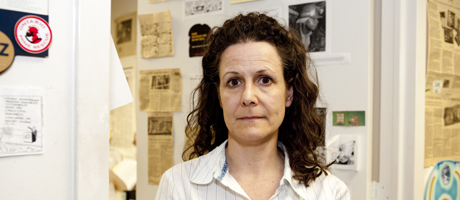By Jennifer Price
An explosion in a West Virginia coal mine that killed at least 25 miners Monday has thrust the issue of mine safety into the spotlight.
Celeste Monforton, assistant research professor in the Department of Environmental and Occupational Health in GW’s School of Public Health and Health Services, talked with GW Today about the deadly explosion, mining safety and the U.S.’s reliance on fossil fuels.
Before coming to GW, Dr. Monforton, M.P.H. '04; Dr.PH '08, worked for six years at the Mine Safety and Health Administration in the U.S. Department of Labor. Prior to that, she worked for five years at the department’s Occupational Safety and Health Administration.
Q: What exactly happened in Monday’s accident?
A: There was a massive explosion around 3 p.m. at the Upper Big Branch mine. Twenty-five died in the explosion, and four more are unaccounted for.
Q: What caused the accident?
A: We don’t know the cause of the disaster yet. There are typically two main causes of explosions in coal mines: coal dust and methane. The process of getting the coal actually creates a huge hazard because it creates these two products that are explosive. If an energy source comes in contact with either the coal dust or methane, it can cause a huge explosion. We also don’t know what the energy source was.
The federal government (Mine Safety and Health Administration) and the state of West Virginia will both conduct investigations.
Q: Why is mining a potentially dangerous profession?
A: You are altering the geology of the Earth. You’re taking minerals that have been there for millions of years and extracting them and creating a big void in the Earth. So it creates a huge pocket under a huge mountain that wants to collapse in on itself. That’s the way gravity works.
Q: Four people are still unaccounted for after Monday’s explosion. Is it possible they are still alive but trapped inside the mine?
A: It’s definitely possible. After the 2006 Sago Mine disaster in Sago, W.Va., laws were passed to require mine operators to build “refuge chambers,” where miners could flee to during an emergency. Inside, they would find enough food, water and oxygen to stay alive for 96 hours.
So if those four miners were able to survive the explosion and get to the refuge chamber, they could still be alive. Rescue workers are currently trying to drill down the mountain and get into the top of the refuge chamber.
Q: Massey Energy Company, the owner of the Upper Big Branch mine, has received several safety violations in recent years. Why were they allowed to still operate?
A: The Mine Safety and Health Administration has the authority to shut down a mine, and it does sometimes shut down portions of a mine. But you have to think about what the political fallout would be if the federal government shuts down a business. It takes an enormous amount of political will to shut a mine down.
Q: What can be done to prevent future disasters in coal mines?
A: In order to mine coal safely, the mine has to be properly engineered and ventilated. There needs to be enough roof support in the mine. Lots of oxygen needs to be blown into the mine so workers can breathe and that the toxic mix of methane and coal dust doesn’t reach a level where it can explode. Gas levels need to be constantly monitored.
This is an engineering challenge, but it can be done properly.
Q: What is the overall state of U.S. coal mines?
A: We’ve been mining in our country for 100 years, and the “easy stuff” is already out. So coal miners have to go miles into a mountain in order to reach untouched coal. The coal is remote, and it’s more challenging to remove.
Q: Why is coal mining so important to the U.S.?
A: About 50 percent of our electricity comes from coal. It’s abundant and cheap, and it lets us live the lifestyle we love. But we are very dependent on fossil fuels, and there’s a cost to the environment and to the people that work in the industry.
We put tens of thousands of our fellow citizens in jobs that have a high number of hazards and a high risk of death and injury. We need to invest our research and our talent into more sustainable energy sources and be more appreciate of the resources we do have and not waste them. Think of them as resources to be treasured.
Comments? Criticism? The conversation continues. We welcome reactions, commentary and story recommendations on our Facebook page.


